If your answer to “Where does fruit come from?” is “the supermarket,” it might surprise you that a list of delicious fruits native to North America won’t include some produce department favorites. Apples, for instance, seem as American as, well, apple pie. Yet their roots reach back to Europe and West Asia, more than ten thousand years ago. Long before they came to Georgia, peaches originated in China. And those Florida oranges have ancestors in ancient Indonesia and Asia. On the other hand, our roster of fruits native to North America does include some delicious faves you might find in your own backyard or garden, as well as some new-to-you treats well worth trying.
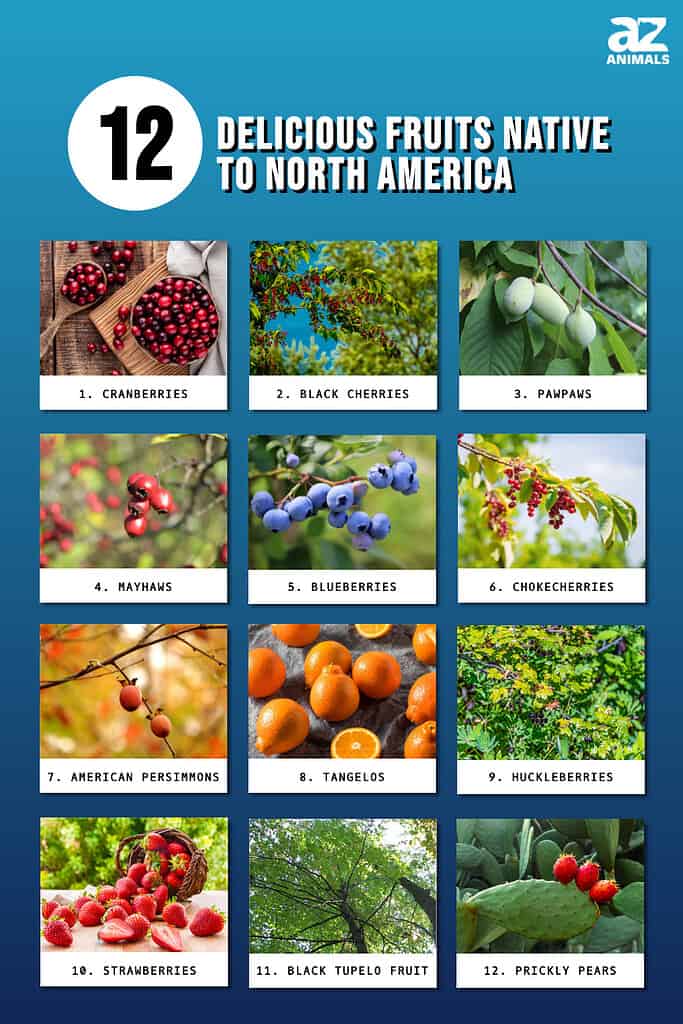
1. Cranberries: Never Bogged Down
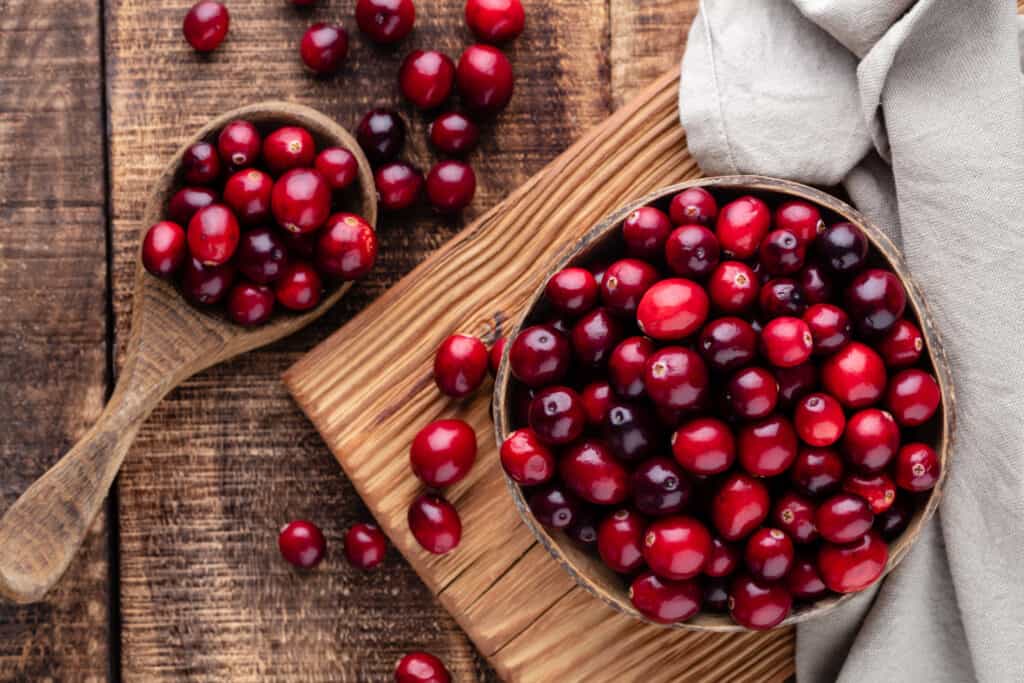
Cranberries are among North America’s most delicious native fruits.
©iStock.com/gitusik
Native Americans were the first to use cranberries (and that’s true for almost every fruit on this list). They utilized the plant in food, drinks, rituals, and various natural remedies. European colonists named it “craneberry,” after the mostly inedible version that grew in their homelands; the name refers to the plant’s crane-shaped flower. By the twentieth century, cranberry cultivation was such a booming industry in the northeastern U.S. that schoolchildren were routinely excused from class to help with the harvest. Cranberries are grown in sandy soil beds called bogs, and harvested by flooding the bogs so the buoyant berries will float to the top to be gathered.
2. Black Cherries: Not Too Sweet

Black cherry trees provide excellent wood and sweet-tart fruit.
©iStock.com/TeleMakro Fotografie (Ina Hensel)
While the black cherry tree is prized for the quality of its wood, the tree’s fruit is no slouch either. These distinctively dark-hued cherries have a sweet-tart taste that can be enjoyed raw but also be used to make jellies and jams and wine, to flavor rum and brandy, and in all sorts of recipes. The rest of the tree…not so edible. The bark, roots, and leaves contain potentially poisonous chemicals. Despite this, black cherry bark has been used to produce traditional remedies for treating coughs and related respiratory ailments.
3. Pawpaws: Due for a Comeback
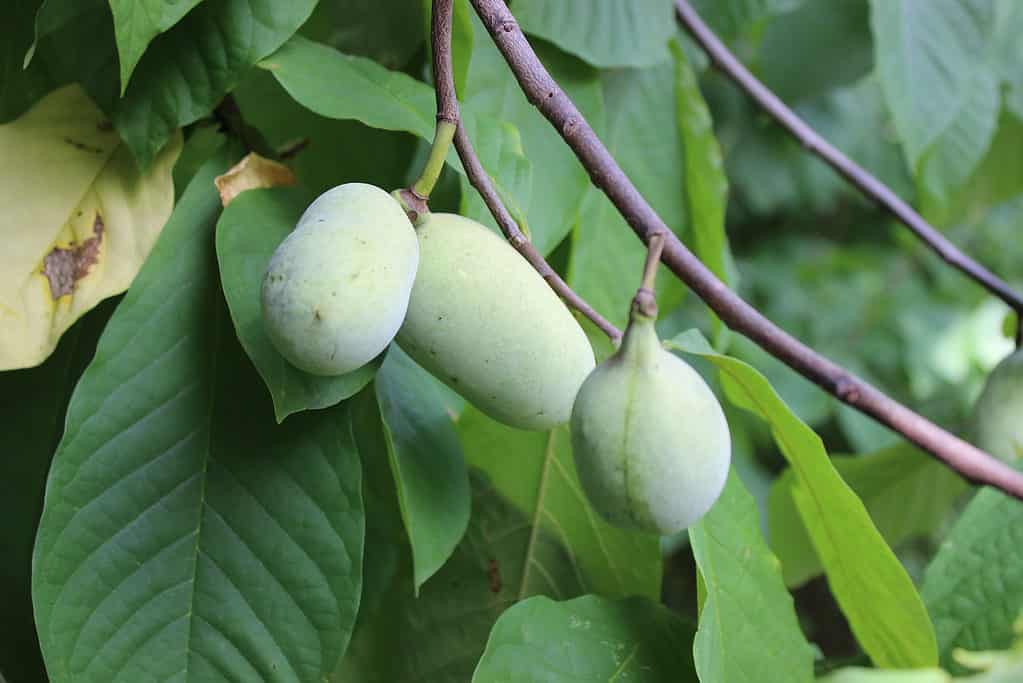
The pawpaw’s nondescript exterior hides a delicious, custard-like interior.
©iStock.com/Jon Kraft
Of all the fruits native to North America, the pawpaw is perhaps the most popular fruit you’ve never heard of. Resembling a small green potato, the fruit’s many enthusiasts describe its flavor as banana-like with mango, vanilla, and citrus hints and a custard texture. Intriguing! Pawpaws are the largest native edible fruit of North America; the trees grow wild in forests from New York to Florida and west to Texas. Once enjoyed by the likes of George Washington and Lewis and Clark, the fruit fell off the American table as commercial agriculture focused on products with longer shelf lives. But farmers’ markets, foragers, and amateur growers keep the pawpaw’s legacy alive. We can hope that one day this delicious fruit will be restored to its rightful prominence.
4. Mayhaws: Fruit Worth a Festival
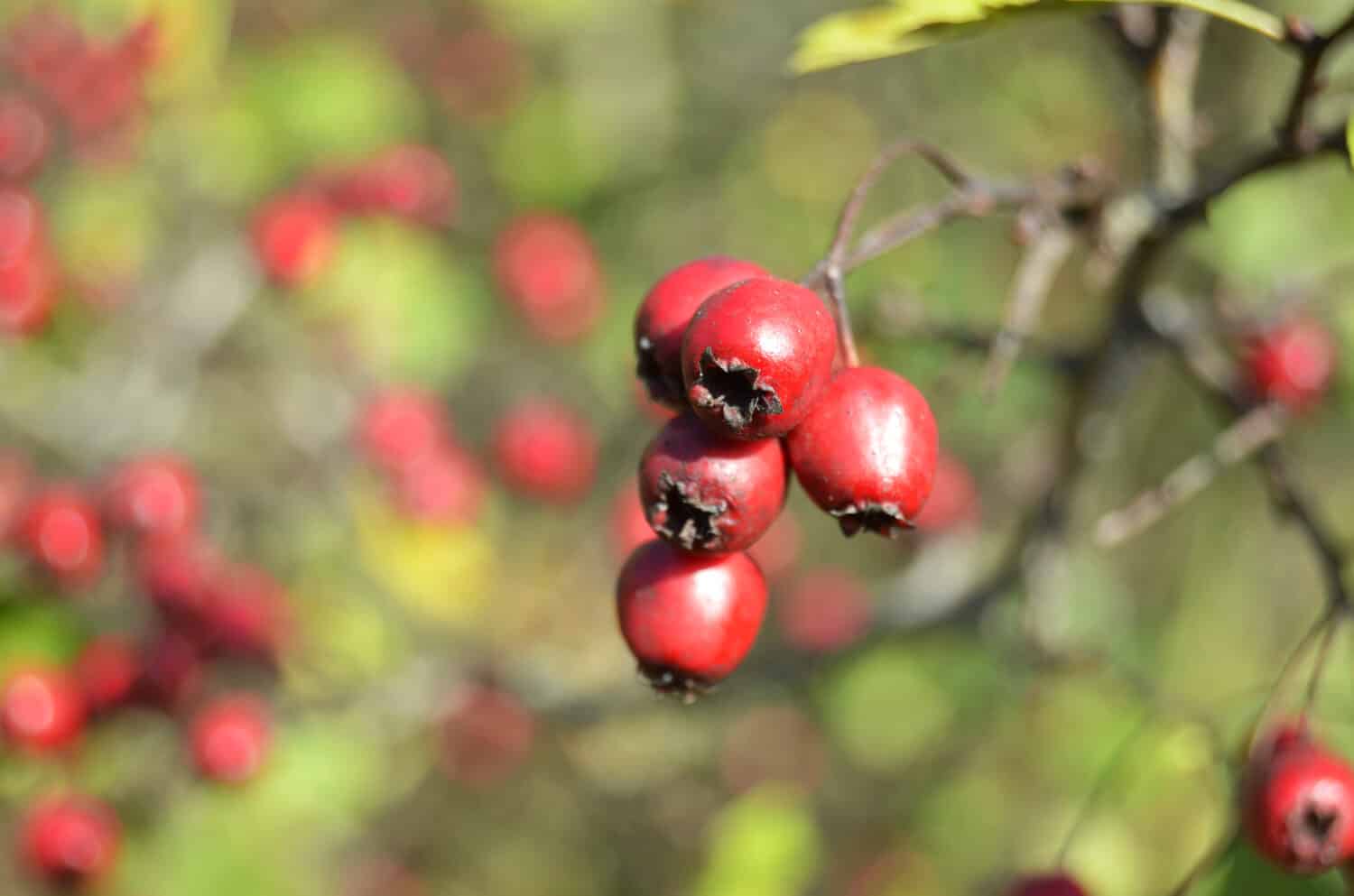
Mayhaw berries are similar in appearance to crabapples.
©Tereza Koudelkova/Shutterstock.com
If you’re not from the southern U.S., you may not be familiar with the fruit of the Mayhaw tree. Also called the thorny hawthorn tree, it’s a small hawthorn that grows in boggy and swampy areas. The Mayhaw fruit tends to drop in May, hence the name. Mayhaw berries resemble small crabapples, about an inch in diameter. And while they may not taste great right off the tree — your mileage may vary — their tartness makes them traditional favorites in jams, jellies, candies, and even wine. This little berry has a big fanbase: the fruit’s close connection to southern culture has inspired spring and summer mayhaw festivals all over the South. In fact, it’s the official state fruit tree of Louisiana.
5. Blueberries: Now Available!
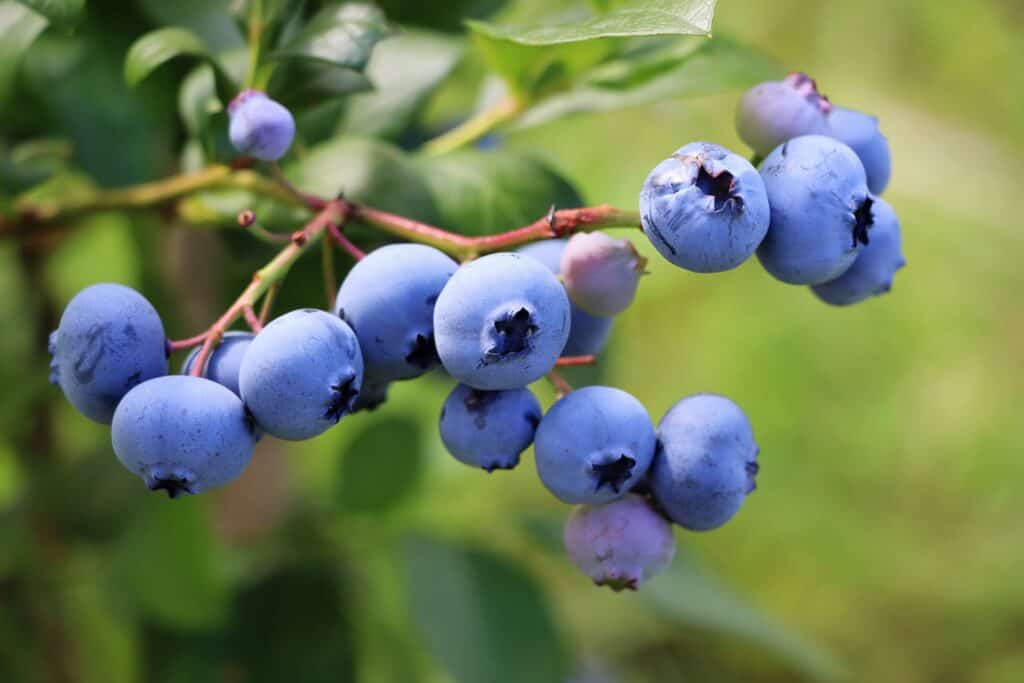
The familiar blueberry was hard to tame.
©vaivirga/Shutterstock.com
Believe it or not, this essential ingredient of muffins, pies, and pancake syrup hasn’t been widely available for very long. Until the early 20th century, growing blueberries as a commercial crop was an elusive conundrum. But botanist Frank Coville and farmer/agriculture expert Elizabeth Coleman White decided to crack the code. And their research bore fruit…literally! Of course, Native Americans were well aware of the blueberry’s charms, especially since it keeps longer in storage than other berries. They not only ate the berries, but they also used the roots, stems, leaves, and flowers for various medicinal purposes.
6. Chokecherries: Relax, It’s Just a Name

Chokecherries make delicious jams, jellies, and syrups.
©iStock.com/Elenakirey
In real talk, a fruit with “choke” in its name doesn’t sound very appetizing. And in fact, the red or black berries of the chokecherry tree take their name from their astringent, even bitter flavor. Not only that, the leaves of the plant are poisonous to cattle and horses (though they have to eat a lot to get sick). Nevertheless, many indigenous people of North America counted on the chokecherry as a food staple and also used it in remedies for head colds, stomach pain, and many other ailments. Like other native berries, chokecherries were used by colonists to make jams, jellies, syrups, and wine. And those traditions continue to this day in some parts of the continent. Like North Dakota, where the chokecherry is the state fruit.
7. American Persimmons: Soft and Sweet

The American persimmon has proved too delicate to easily ship.
©Katja Schulz from Washington, D. C., USA / CC BY 2.0 – License
A plum-sized cousin to the larger Asian persimmon, the American persimmon has a soft, custard-like texture when ripe, and a sweet flavor with notes of honey. It’s said to be more flavorful than the Asian species. But its softness makes it difficult to ship, so Asian persimmons are far more commercially available. Which is a shame, because this American softie is also higher in vitamin C and calcium. With a growing range from New England to Florida and west to Texas, Louisiana, Oklahoma, and Kansas, the fruit was prized by many Native populations. In fact, the word persimmon is derived from the Algonquian language.
8. Tangelos: Taste the Science!

Tangelos are a cross between mandarin oranges and grapefruits, and they’re oh-so-tasty!
©596689/Shutterstock.com
While most fruits native to North America predate any written record, the origins of the tangelo are much more recent. The tangelo is a hybrid fruit, first created in Florida in 1887. Researchers crossed mandarin orange (or tangerine) with grapefruit or pomelo (a grapefruit ancestor), and…hello tangelo! Since those experimental origins, a number of different Tangelo cultivars have come to market. That includes the so-called Ugli fruit, though that one seems to have developed naturally in the wild in Jamaica. Tangelos tend to have loose skin that makes for easy peeling, and a sweet-tart flavor blending the attributes of their founding fruits. Most have a small knob at one end that will help you ID them in the produce bins.
9. Huckleberries: Still Wild After All These Years
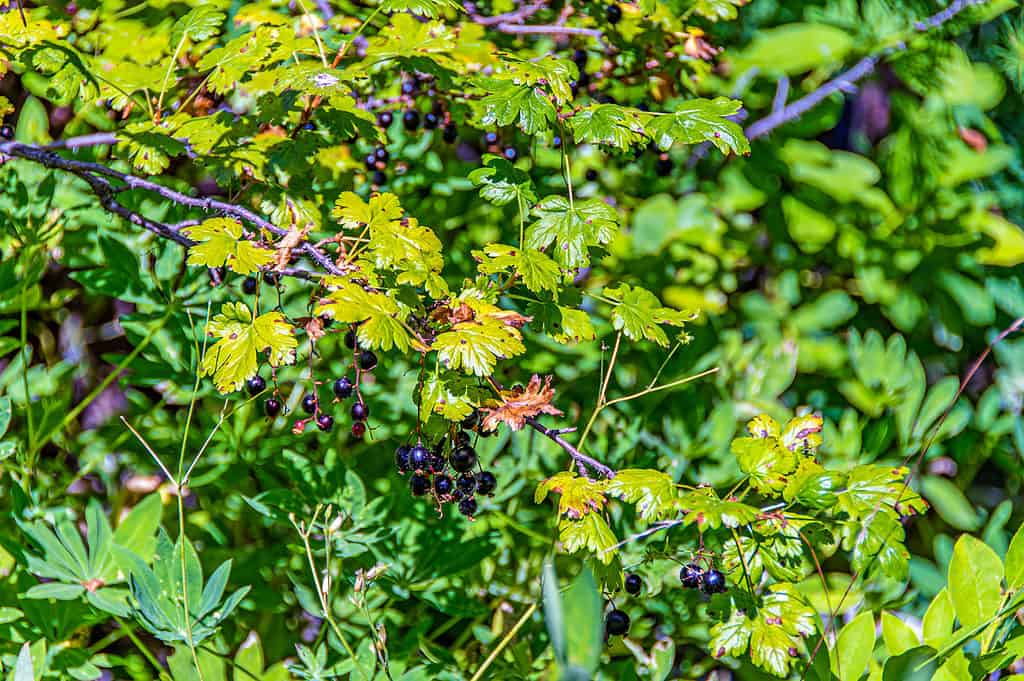
Picking wild huckleberries remains the go-to method for harvesting this fruit.
©iStock.com/MarciParavia
The term “huckleberry” applies to a number of North America’s native plant species, including the black huckleberry that grows in the East, and the red huckleberries (sometimes called bilberries or whortleberries) found on the west coast. Unlike blueberries and cranberries, their relatives, huckleberries have proven difficult to cultivate on a large scale. So berries picked in the wild are the main ingredient in the jams, jellies, pies, and even milkshakes featuring this versatile fruit. In case you’re wondering, it’s not really known why Mark Twain chose the name “Huckleberry” for the protagonist of Huckleberry Finn. But one explanation is that the berry, like the boy, resists domestication and is at its best in the wild.
10. Strawberries: You’re Welcome, World
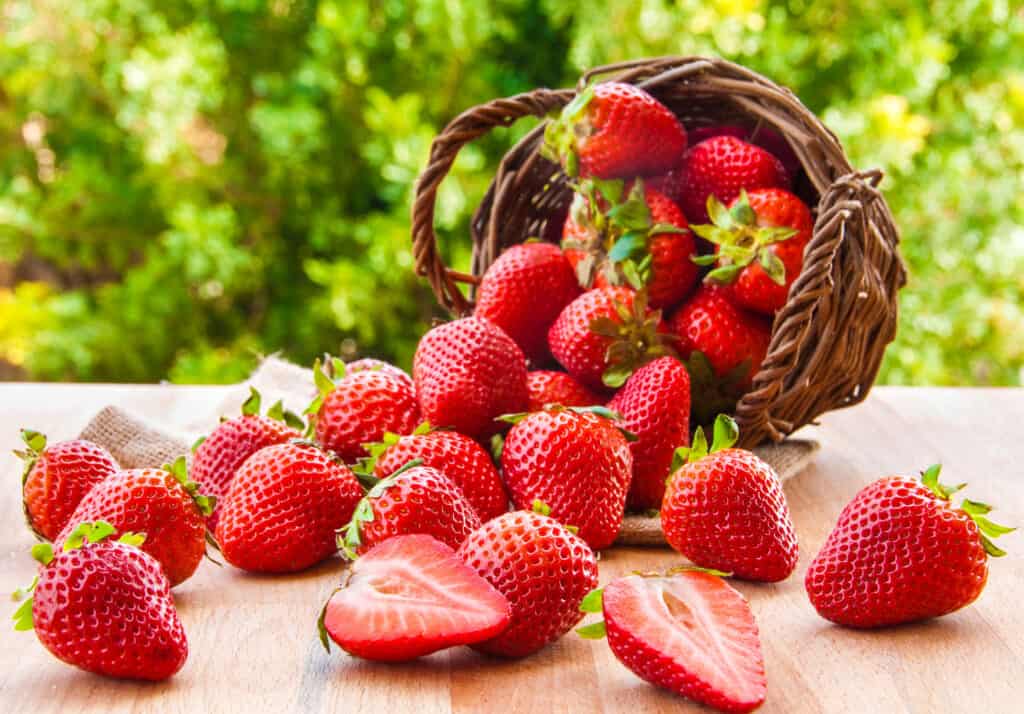
Gift basket: the Americas gave the commercial strawberry to the world.
©iStock.com/MariaUspenskaya
Strawberries grow all around the world and have been a favored fruit since antiquity. But the modern strawberry that you find in the supermarket is a hybrid of two plants from the Americas: a wild strawberry first taken from North America to France in the 17th century, and a strawberry plant brought to France from Chile nearly a century later. Crossbreeding the two gifted the world with a hybrid that combines the productivity of the former with the large berries of the latter. Flash forward to the 21st century, and we find strawberries being grown in every U.S. state and Canadian province. California alone produces a billion strawberries a year, enough to circle the Earth 15 times if laid end to end (you’ll need a lot of cream with that).
11. Black Tupelo Fruit: Tiny and Tangy

The fruit of the black gum tree has a distinctly tangy taste…if you can get to them before the birds do.
©Photo by David J. Stang / CC BY-SA 4.0, via Wikimedia Commons – License
The black tupelo tree has several other names, including black gum, sour gum, cotton gum, and pepperidge. Its less polite aliases include beetle bug and stinkwood (no offense, tupelo, we’re just sayin’). Whatever you call it, black tupelo is a favorite landscape tree, providing deep green leaves in spring and summer and intense fall foliage colors. Its fruit isn’t much to look at, appearing as small dark blue or purple berries with large seeds. But their rich flavor can be used in jellies and preserves, and some enjoy the sour tang of the raw berries too. Your backyard black tupelo might not produce fruit, though. These trees are dioecious, meaning the trees need to be pollinated for fruit to set. By the way, the famous “tupelo honey” is a highly sought-after delicacy produced by bees who take nectar from the white tupelo, a relative of this tree.
12. Prickly Pears: Well Worth the Effort
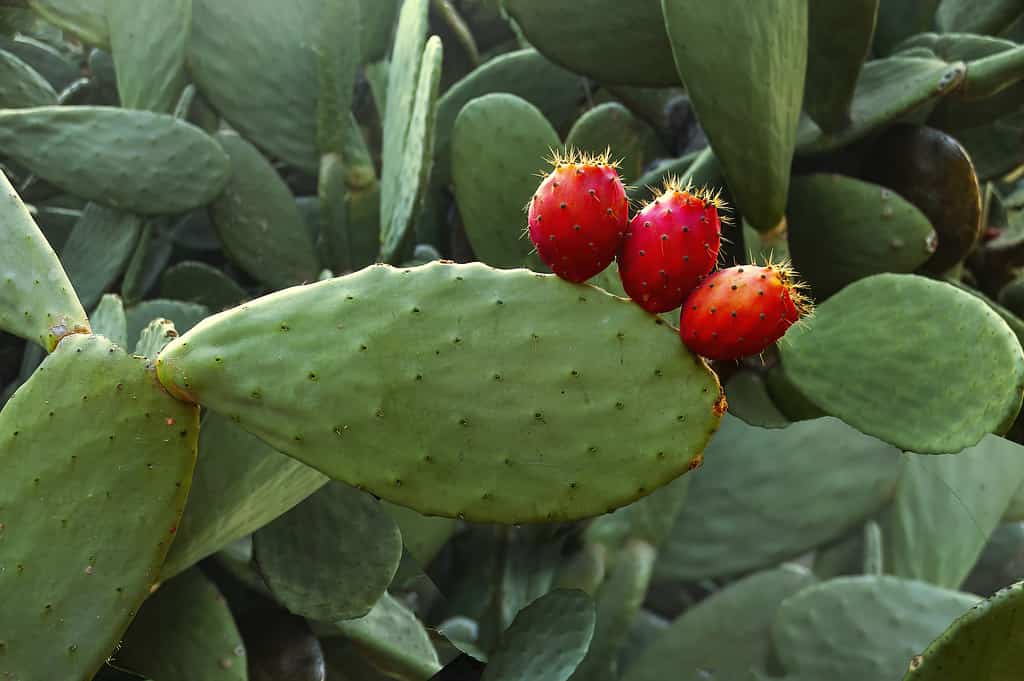
Handle with care: prickly pear fruits are tasty but well-defended.
©iStock.com/barbaraaaa
Abundant in Mexico (it’s even on the Mexican flag), the prickly pear can also be found in the dryer regions of the southern and western U.S. We’ll never know who first thought to brave the spiky spines of this native cactus. But we owe them a debt of gratitude for introducing the rest of us to the prickly pear’s delicious flavor. Behind those spikes is a variable taste ranging from citrus, berry, or melon to fig or banana.
Both the fruit and the fleshy pads of the cactus are edible. But getting them requires careful harvesting to avoid the plant’s spines and barbed hairs. Heating the plant over an open flame before peeling is one method (that comes with cautions of its own). After that, the fruit can be peeled and sliced and eaten raw, or used in any number of ways, including for syrups, candies, jellies, salads, and beverages. Mexican cuisine is full of prickly pear recipes. According to legend, the future site of Mexico City was determined by an eagle that landed on a prickly pear.
Summary of 12 Delicious Fruits Native to North America
| Native Fruit | Fun Fact | |
|---|---|---|
| 1 | Cranberries | They are grown in bogs and harvested by flooding |
| 2 | Black Cherries | Both the wood and the fruit of this tree are highly prized |
| 3 | Pawpaws | Looks like a little potato – tastes like a custardy banana mango |
| 4 | Mayhaws | They are a tart favorite for Southern jams and jellies |
| 5 | Blueberries | Native Americans ate the berries and used the rest of the plant for medicinal purposes |
| 6 | Chokecherries | This bitter fruit has healing properties |
| 7 | American Persimmons | Has a soft, custardy texture with notes of honey |
| 8 | Tangelos | A delicious hybrid fruit – part tangerine – part grapefruit |
| 9 | Huckleberries | These yummy berries can only be found growing wild |
| 10 | Strawberries | Modern-day strawberries are actually a hybrid of the wild berry of North America and one from Chile |
| 11 | Black Tupelo Fruit | The famous delicacy – Tupelo Honey – is made by bees from the fruit of the White Tupelo |
| 12 | Prickly Pears | These delicious fruits must be harvested with care from a prickly cactus |
The photo featured at the top of this post is © iStock.com/TT
Thank you for reading! Have some feedback for us? Contact the AZ Animals editorial team.







